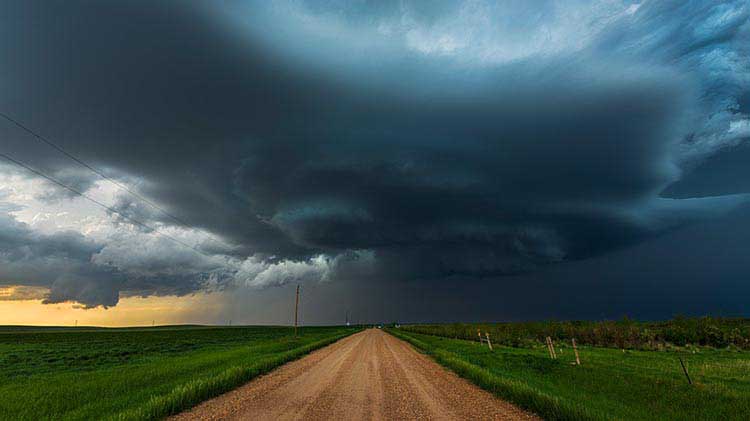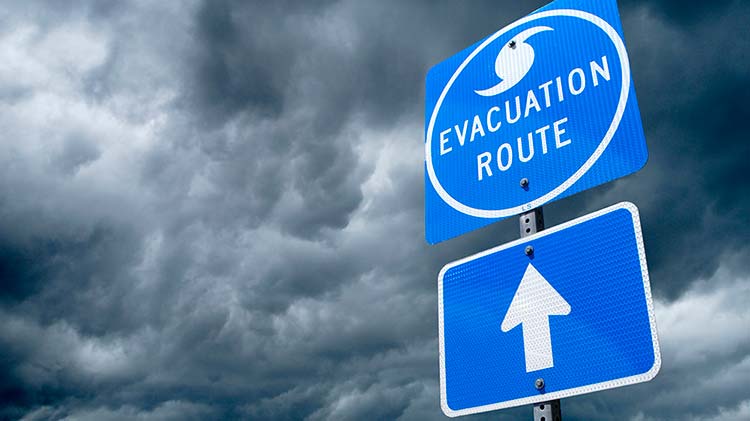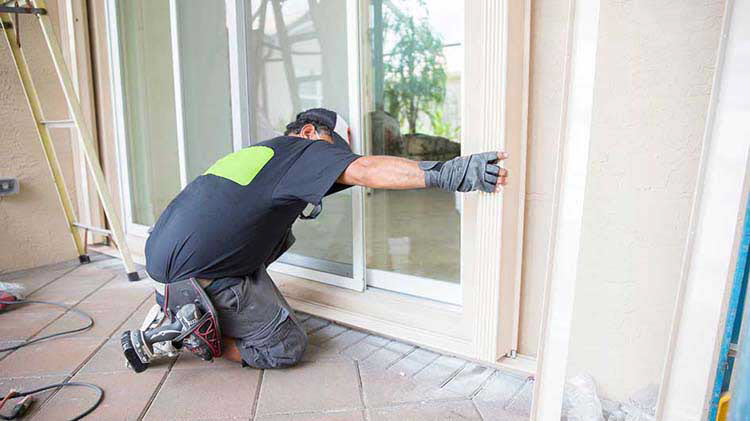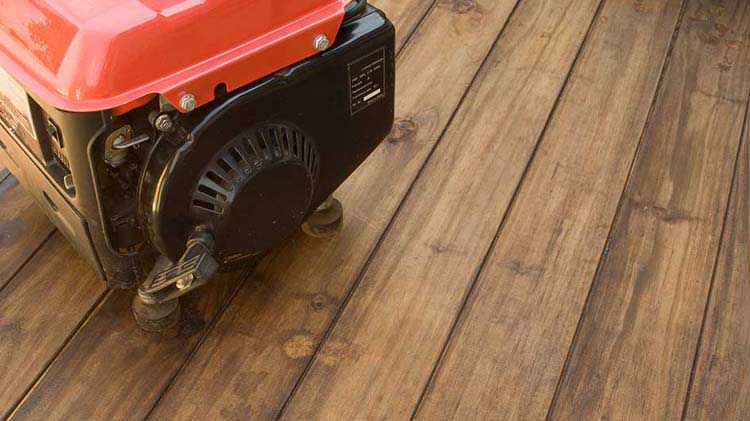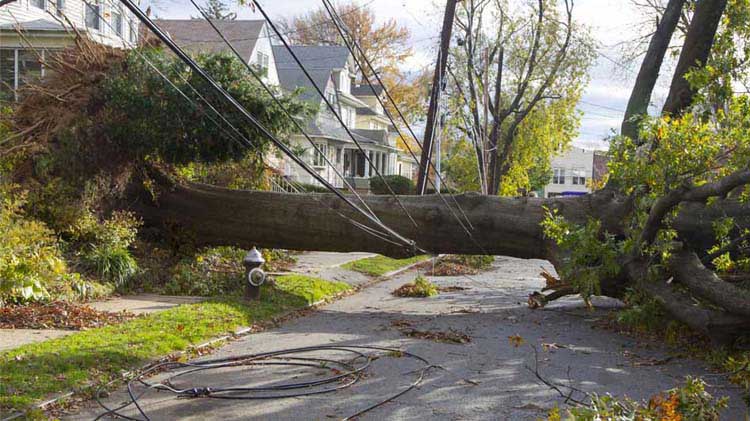Tornado safety: What to do in a tornado
Tornado safety involves thorough preparation, knowing how to stay safe during a tornado and effectively navigating the aftermath. Understanding what to do in a tornado and being vigilant about tornado preparedness can help save lives.
A tornado is a violently rotating column of air that extends from a thunderstorm to the ground. Tornadoes can generate wind speeds exceeding 200 miles per hour. They are some of the most destructive natural disasters, capable of causing widespread damage in their path. Tornadoes often develop quickly, giving little time for preparation, which is why having a solid disaster plan is essential.
Tornadoes can occur in various parts of the world, but they are most common in the United States and can happen anytime. According to the National Weather Service, the U.S. experiences about 1,000 tornadoes each year, resulting in an average of 80 deaths and over 1,500 injuries.
Table of contents
Recognizing the warning signs of a tornado
Consider educating your family on the difference between a tornado watch and a tornado warning and know what to do during each. Regularly review and see that everyone can spot the warning signs of a tornado which can include:
- Cloud of debris
- Dark or green-colored sky
- Funnel-shaped cloud
- Large hail
- Loud roaring sounds, like a freight train
Know the differences between a tornado watch vs. warning
Being informed is the first step in preparing for a tornado. A tornado watch means that tornadoes are possible in the area. Stay vigilant, monitor the weather and review your tornado disaster plan. A tornado warning, on the other hand, means a tornado has been spotted or indicated by radar and you should take shelter immediately. Understanding these differences is essential.
How to prepare for a tornado
Preparing for a tornado is crucial in limiting damage and helping save lives. Below are some tornado safety tips to help you and your family stay safe:
- Create a tornado disaster plan. Discuss emergency protocols with your family. Know where to go during a tornado in your house. The safest spot is typically an interior room on the lowest floor, like a basement, safe room, storm cellar or a bathroom without windows.
- Designate a family meeting spot. Decide where your family will meet if you’re separated during the storm.
- Build an emergency kit. Pack an emergency kit containing water, non-perishable foods, first aid supplies, medications, flashlights, batteries, phone chargers and battery-powered radio.
- Gather vital documents. Keep important personal documents, such as passports, birth certificates, medical records, a medication list with dosages and a home inventory list, in a safe that is easily accessible.
- Practice tornado drills. Run through your tornado disaster plan regularly with everyone in the household, including pets, so everyone knows what to do in case of a tornado.
- Stay informed. Consider signing up for weather alerts from your local government or download a reliable weather app.
- Secure your home. Trim large branches and secure outdoor items that could blow away. Consider adding storm shutters or reinforcing your roof and walls to help protect against high winds.
- Review your insurance coverage. If you’re a homeowner, talk with your agent to check if your homeowners’ insurance policy offers replacement cost value for your home.
A strong tornado preparedness plan can help make a significant difference if disaster strikes.
What to do during a tornado
Once a tornado warning has been issued, it’s crucial to find safety.
- Inside a building — move to the lowest level and stay away from windows and doors. Use sturdy furniture or a mattress to help protect yourself from flying debris. Remember to bring your pets if safe to do so.
- In a vehicle or outside with no shelter — find a nearby building for shelter. If no options are available, lie flat in a ditch or low spot, covering your head. Avoid taking shelter under bridges or overpasses.
- Mobile homes — evacuate immediately to a sturdy shelter. Mobile homes are not safe during tornado winds.
- Schools or public buildings — follow the building’s tornado safety procedures and head to designated shelter areas.
Stay updated with local weather information and utilize smartphones, radios and TVs for real-time updates. If you can communicate with your loved ones, let them know where you are so they can find you after the storm.
What to do after a tornado
Once the tornado has passed, consider these tips as you assess the damage:
- Stay informed. Watch for emergency alerts on your phone and stay tuned to NOAA Weather Radio or a local alert system for current information and instructions. Remain sheltered until the tornado warning is over.
- Check for injuries. Examine yourself and others for injuries and administer basic first aid if necessary. Call 911 for medical emergencies.
- Help your neighbors. Reach out to neighbors to check if they are safe and in need of assistance.
- Stay alert. Watch for hazards like downed power lines, flooded areas and damaged buildings. Report any downed power lines or broken gas lines immediately.
- Be aware of carbon monoxide poisoning. Do not use gasoline, propane, natural gas or charcoal-burning devices inside your home. Carbon monoxide can’t be seen or smelled. If you feel sick, dizzy or weak, get to fresh air immediately.
- Assess your home. Look for structural damage but avoid entering your home if it appears unsafe.
- Clean up. If it is safe to do so, start cleaning up. Wear thick-soled shoes, long pants and work gloves to help reduce injuries.
- Document damages. Use your smartphone or camera to record damages and note any details to help with the claim process. Policies such as homeowners, renters or auto insurance typically offers coverage against tornado damage. Review your policy coverages with your agent.
Recovering from a tornado usually involves both rebuilding and emotional healing. Children, adults and pets may experience unanticipated feelings such as a sudden fear of storms and tornadoes, anxiety and depression following the aftermath of a tornado or storm. Recognize your feelings and reach out for help. Seek assistance from a counselor if needed.
As you work to regain a sense of normalcy, the American Red Cross has helpful information on how to clean up after a tornado. As you rebuild, consider a safe room, roofs rated for impact and/or wind resistance and research other ways to help protect your home for additional safety in the future. Learn more helpful information about tornado safety from ready.gov.
